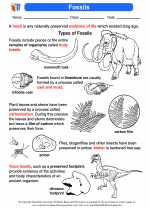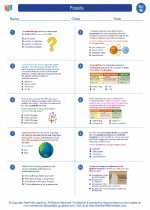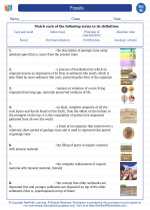Eighth Grade Science: The Eight Planets
Welcome to the fascinating world of the eight planets in our solar system! Let's dive into an exploration of each of these celestial bodies.
Mercury
Mercury is the closest planet to the Sun and the smallest planet in our solar system. It has a heavily cratered surface, similar to the Earth's moon. Its thin atmosphere consists of trace amounts of gases like hydrogen, helium, and oxygen.
Venus
Venus is the second planet from the Sun and is often called Earth's "sister planet" due to its similar size and composition. Venus has a thick, toxic atmosphere primarily composed of carbon dioxide with clouds of sulfuric acid. It is the hottest planet in our solar system due to its greenhouse effect.
Earth
Earth is the third planet from the Sun and the only known planet to support life. It has a diverse range of environments, including oceans, continents, and an atmosphere that sustains a variety of living organisms. The presence of water in its three states (solid, liquid, and gas) is a unique feature of Earth.
Mars
Mars is the fourth planet from the Sun and is often called the "Red Planet" due to its reddish appearance. It has a thin atmosphere primarily composed of carbon dioxide. Mars has polar ice caps and evidence of past liquid water, which has led to speculation about the possibility of past life on the planet.
Jupiter
Jupiter is the largest planet in our solar system and is known for its massive size and distinct banded appearance. It is a gas giant with a thick atmosphere mainly composed of hydrogen and helium. Jupiter also has a prominent feature known as the Great Red Spot, a giant storm that has been raging for centuries.
Saturn
Saturn is the second-largest planet and is famous for its stunning ring system, which is made up of ice particles, rocks, and dust. Like Jupiter, Saturn is a gas giant with a thick atmosphere primarily composed of hydrogen and helium. Its rings make it one of the most visually striking planets in our solar system.
Uranus
Uranus is an ice giant with a bluish-green color due to the presence of methane in its atmosphere. It is unique among the planets as it rotates on its side, possibly due to a past collision with a massive object. Uranus has a system of faint rings and a diverse range of moons.
Neptune
Neptune is the farthest planet from the Sun and is known for its deep blue coloration. It is an ice giant with a dynamic atmosphere that contains icy clouds and high-speed winds. Neptune also has a system of rings and a collection of intriguing moons, including Triton, which is believed to be a captured Kuiper Belt object.
Study Guide:
- What is the closest planet to the Sun? Mercury
- Which planet is known as Earth's "sister planet"? Venus
- What unique feature does Earth possess? Presence of water in its three states (solid, liquid, and gas)
- Which planet is often called the "Red Planet"? Mars
- Which planet is the largest in our solar system? Jupiter
- What makes Saturn visually striking? Its stunning ring system
- What gives Uranus its bluish-green color? The presence of methane in its atmosphere
- Which planet is known for its deep blue coloration? Neptune
Feel free to explore further and delve into the unique characteristics of each planet. The wonders of our solar system await!
[Eight Planets] Related Worksheets and Study Guides:
.◂Science Worksheets and Study Guides Eighth Grade. Fossils

 Activity Lesson
Activity Lesson
 Worksheet/Answer key
Worksheet/Answer key
 Worksheet/Answer key
Worksheet/Answer key
 Worksheet/Answer key
Worksheet/Answer key
 Worksheet/Answer key
Worksheet/Answer key
 Vocabulary/Answer key
Vocabulary/Answer key
 Vocabulary/Answer key
Vocabulary/Answer key
